Phlyctenular keratoconjunctivitis
Contributor: William Charles Caccamise, Sr, MD, Retired Clinical Assistant Professor of Ophthalmology, University of Rochester School of Medicine and Dentistry
*Dr. Caccamise has very generously shared his images of patients taken while operating during the "eye season" in rural India as well as those from his private practice during the 1960's and 1970's. Many of his images are significant for their historical perspective and for techniques and conditions seen in settings in undeveloped areas.
PKC is becoming an extreme rarity in modern societies, but it still exists in underdeveloped societies. At the Kurji Holy Family Hospital Eye Clinic in the 1960's such cases were seen almost daily. There are three terms that have been used interchangeably for this disease:
- phlyctenular keratoconjunctivitis
- eczematous keratoconjunctivitis
- scrofulous keratoconjunctivitis.
With improvement in general health, public health and general social wellbeing, this disease has been on the wane.
A classic example in a patient at the Eye Clinic in India in 1968
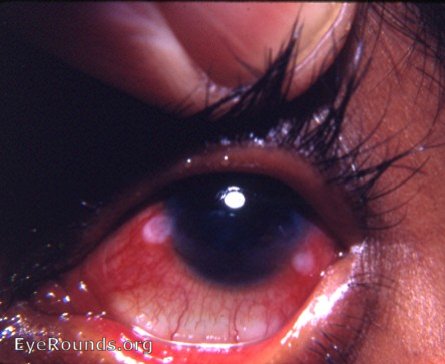
PKC is becoming rare as public health problems are ameliorated. In 1968 when this photo was taken by Dr. Caccamise in his eye clinic in India, PKC was generally attributed to tuberculosis.
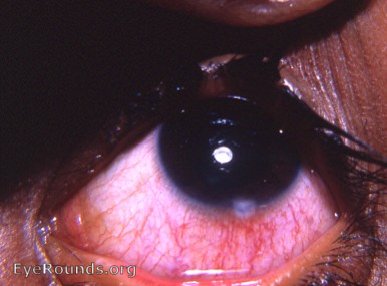
This is now considered to be an allergic reaction to an antigen - not just tuberculosis. In the days of rampant tuberculosis, it was attributed to that disease. In fact it was known as keratoconjunctivitis scrophulosa.

Phlyctenular keratoconjunctivitis (PKC) is a classic limbally located phlyctenule. It occurs primarily in children. It is considered to be an allergic reaction to toxins. In India, the first consideration was an allergic response to tuberculosis until proved otherwise. An older term for phlyctenular keratoconjunctivitis (PKC) was keratoconjunctivitis scrophulosa or eccematosa.
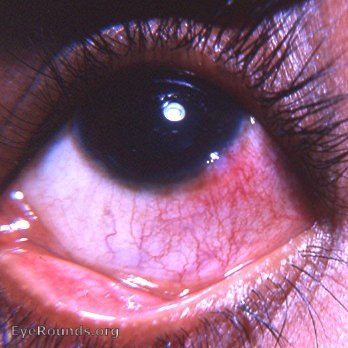
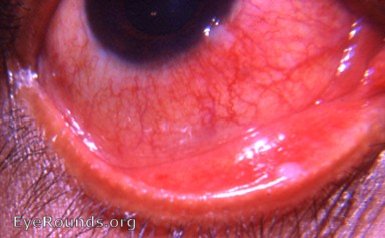
Considered to be an allergic reaction to toxins or allergens of conjunctival infections. At times it appears to be an immune reaction to toxins or allergens within the patient's body. A phylectenular reaction appears early as a whitish elevation within a hyperemic limbus.
PKC (phlyctenular keratoconjunctivis) with a giant phlyctenule
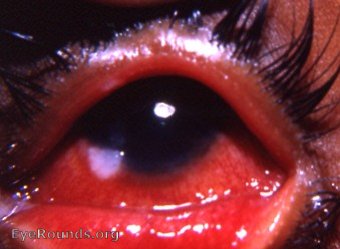
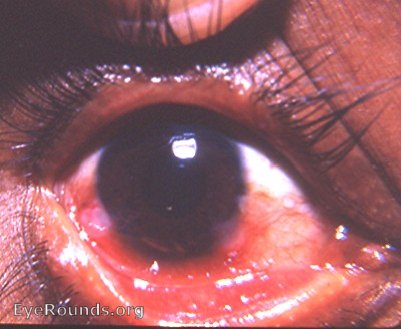

Ophthalmic Atlas Images by EyeRounds.org, The University of Iowa are licensed under a Creative Commons Attribution-NonCommercial-NoDerivs 3.0 Unported License.


